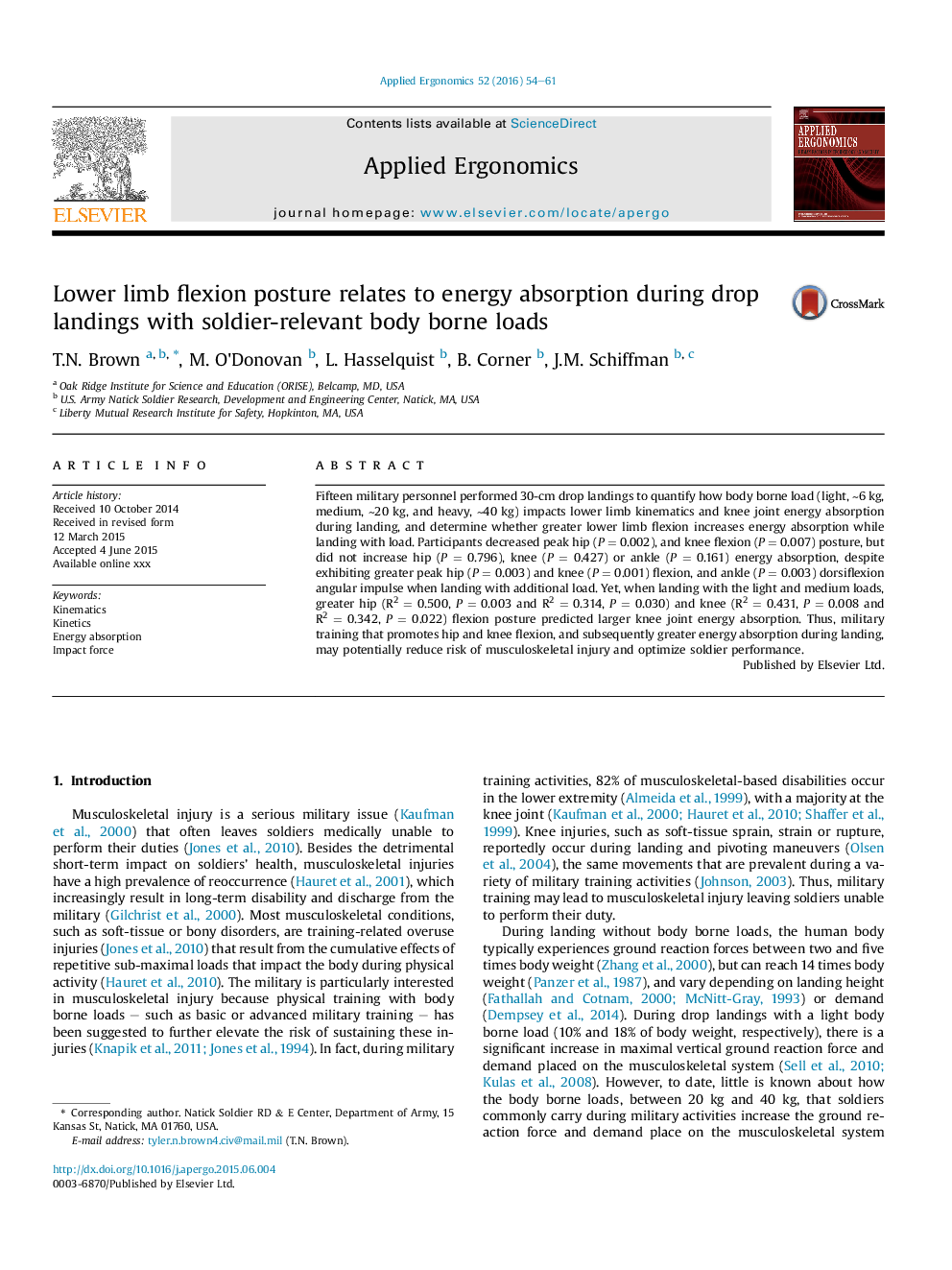| کد مقاله | کد نشریه | سال انتشار | مقاله انگلیسی | نسخه تمام متن |
|---|---|---|---|---|
| 6947918 | 1450716 | 2016 | 8 صفحه PDF | دانلود رایگان |
عنوان انگلیسی مقاله ISI
Lower limb flexion posture relates to energy absorption during drop landings with soldier-relevant body borne loads
ترجمه فارسی عنوان
استحکام فلکسون اندام پایین تر مربوط به جذب انرژی در طی فرود افتادن با بارهای بدن مربوط به سرباز می باشد
دانلود مقاله + سفارش ترجمه
دانلود مقاله ISI انگلیسی
رایگان برای ایرانیان
کلمات کلیدی
موضوعات مرتبط
مهندسی و علوم پایه
مهندسی کامپیوتر
تعامل انسان و کامپیوتر
چکیده انگلیسی
Fifteen military personnel performed 30-cm drop landings to quantify how body borne load (light, â¼6Â kg, medium, â¼20Â kg, and heavy, â¼40Â kg) impacts lower limb kinematics and knee joint energy absorption during landing, and determine whether greater lower limb flexion increases energy absorption while landing with load. Participants decreased peak hip (PÂ =Â 0.002), and knee flexion (PÂ =Â 0.007) posture, but did not increase hip (PÂ =Â 0.796), knee (PÂ =Â 0.427) or ankle (PÂ =Â 0.161) energy absorption, despite exhibiting greater peak hip (PÂ =Â 0.003) and knee (PÂ =Â 0.001) flexion, and ankle (PÂ =Â 0.003) dorsiflexion angular impulse when landing with additional load. Yet, when landing with the light and medium loads, greater hip (R2Â =Â 0.500, PÂ =Â 0.003 and R2Â =Â 0.314, PÂ =Â 0.030) and knee (R2Â =Â 0.431, PÂ =Â 0.008 and R2Â =Â 0.342, PÂ =Â 0.022) flexion posture predicted larger knee joint energy absorption. Thus, military training that promotes hip and knee flexion, and subsequently greater energy absorption during landing, may potentially reduce risk of musculoskeletal injury and optimize soldier performance.
ناشر
Database: Elsevier - ScienceDirect (ساینس دایرکت)
Journal: Applied Ergonomics - Volume 52, January 2016, Pages 54-61
Journal: Applied Ergonomics - Volume 52, January 2016, Pages 54-61
نویسندگان
T.N. Brown, M. O'Donovan, L. Hasselquist, B. Corner, J.M. Schiffman,
